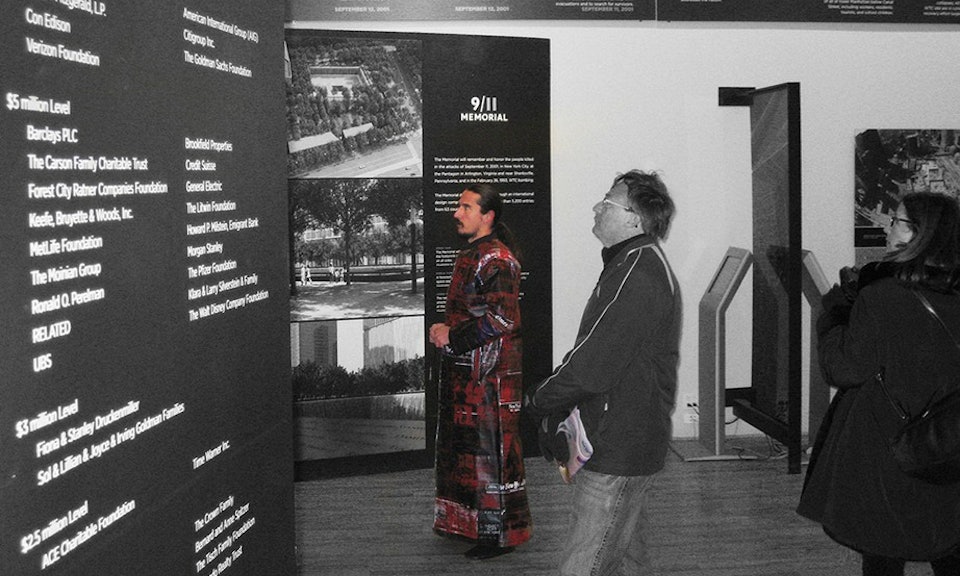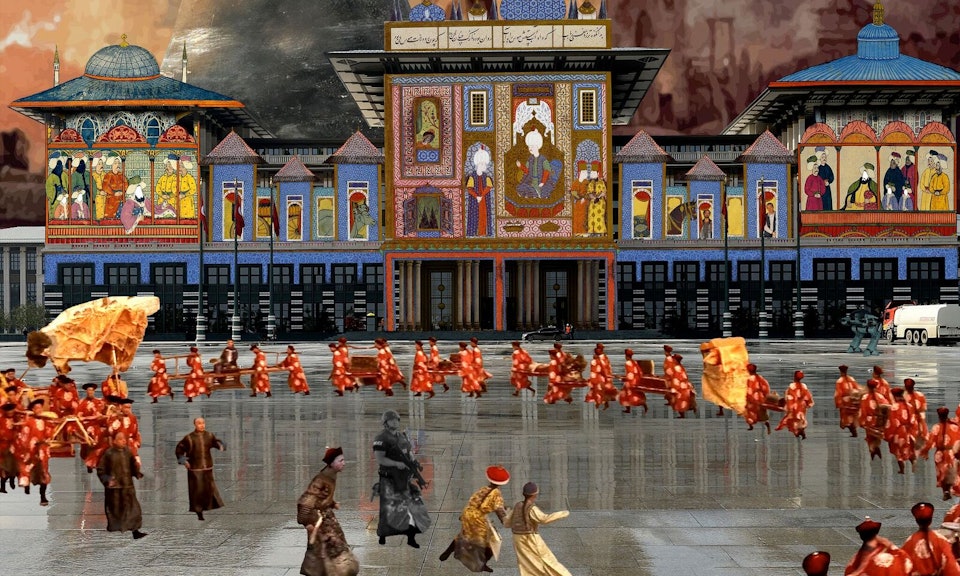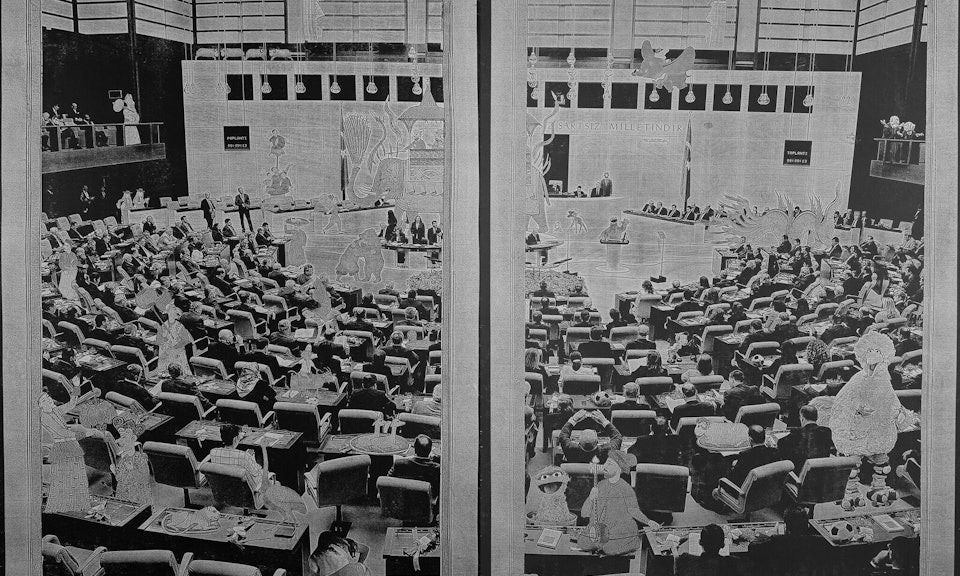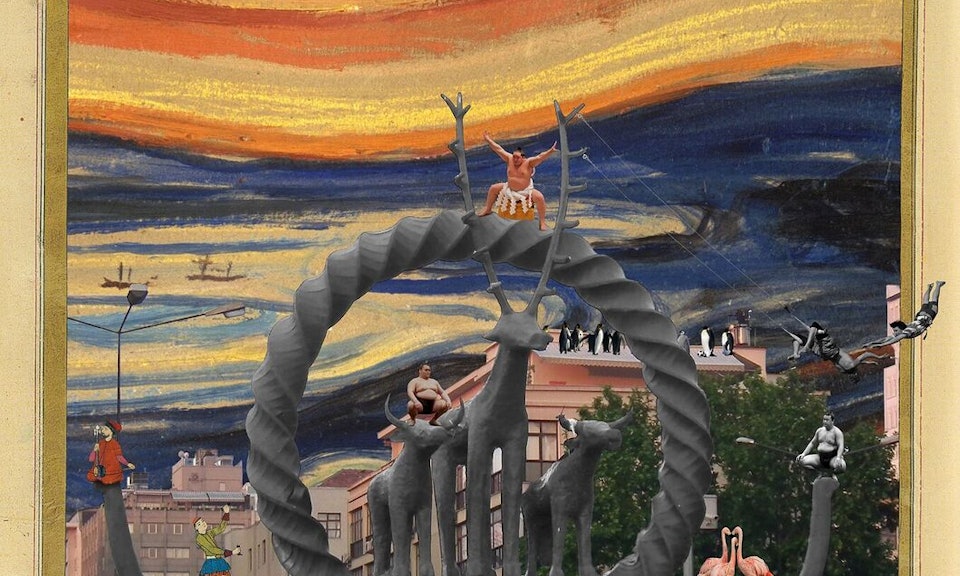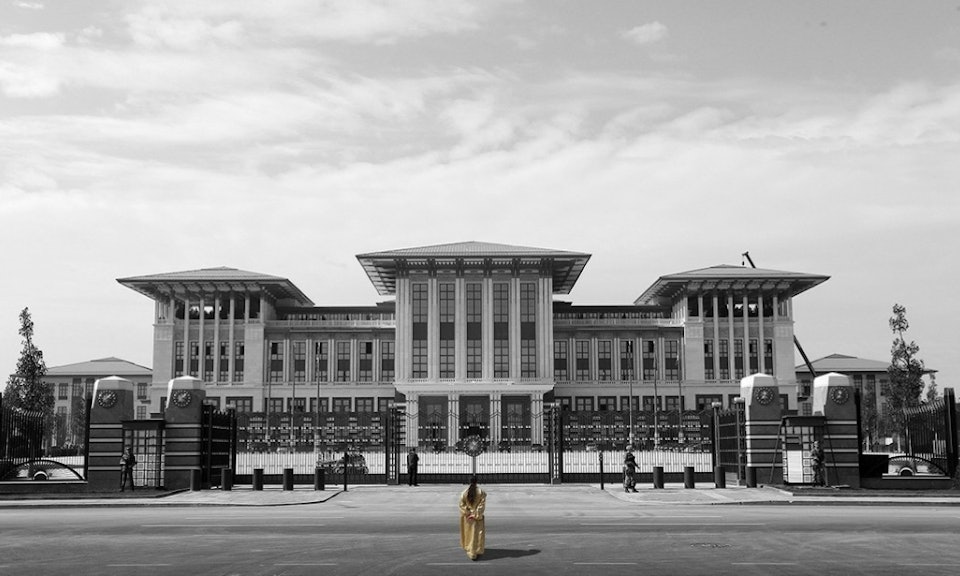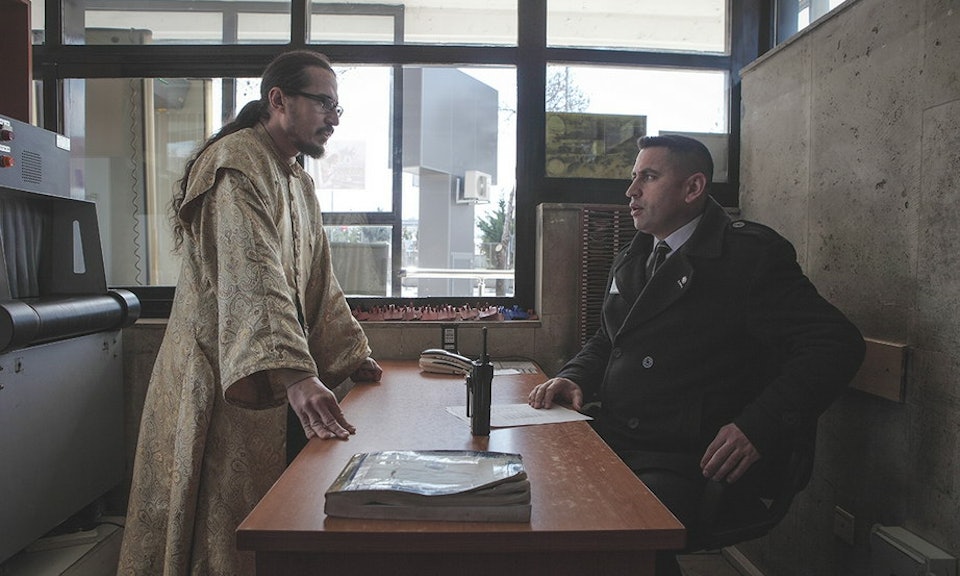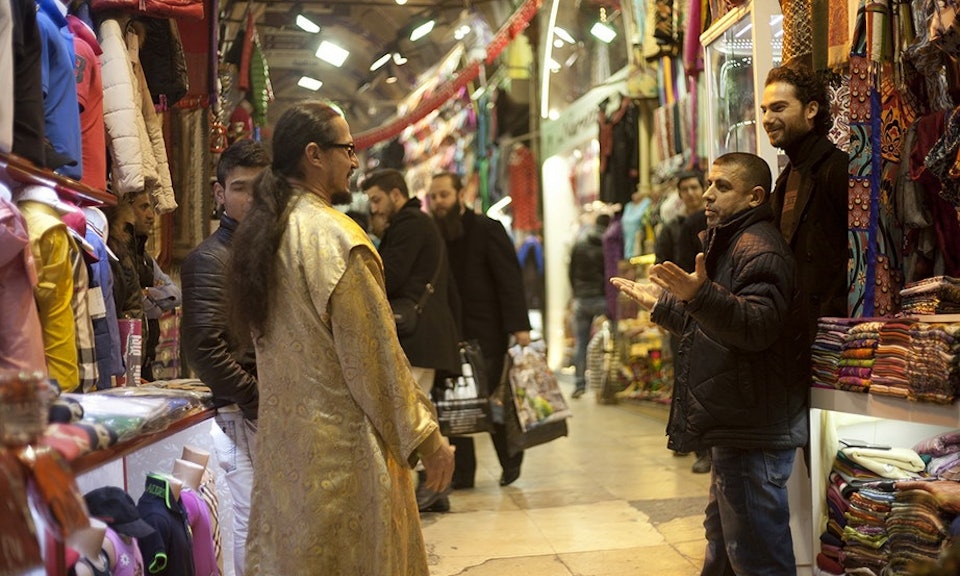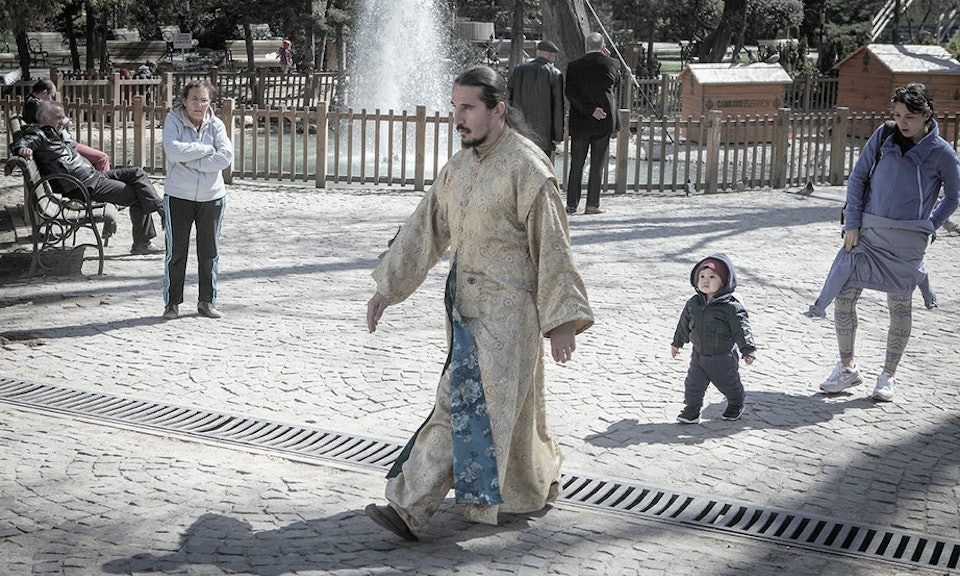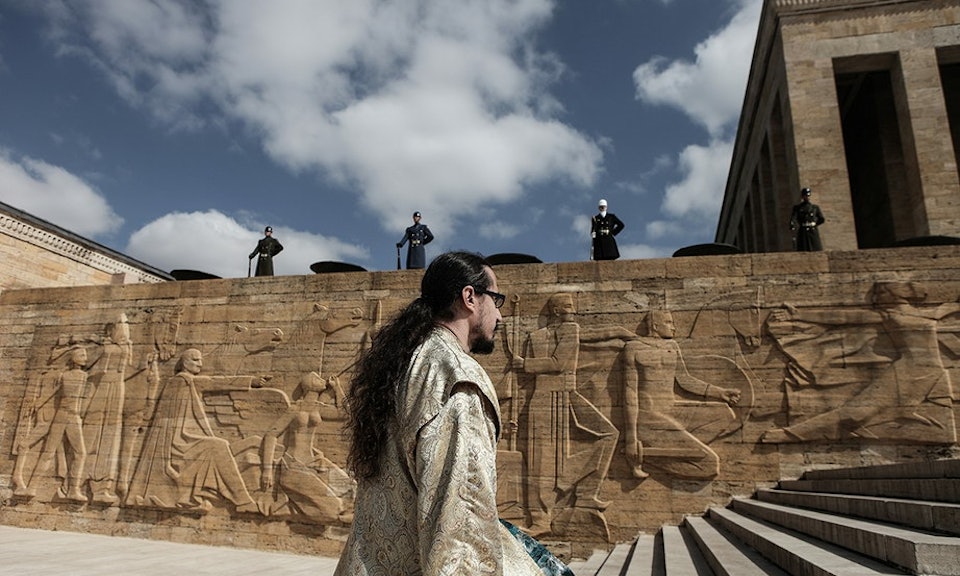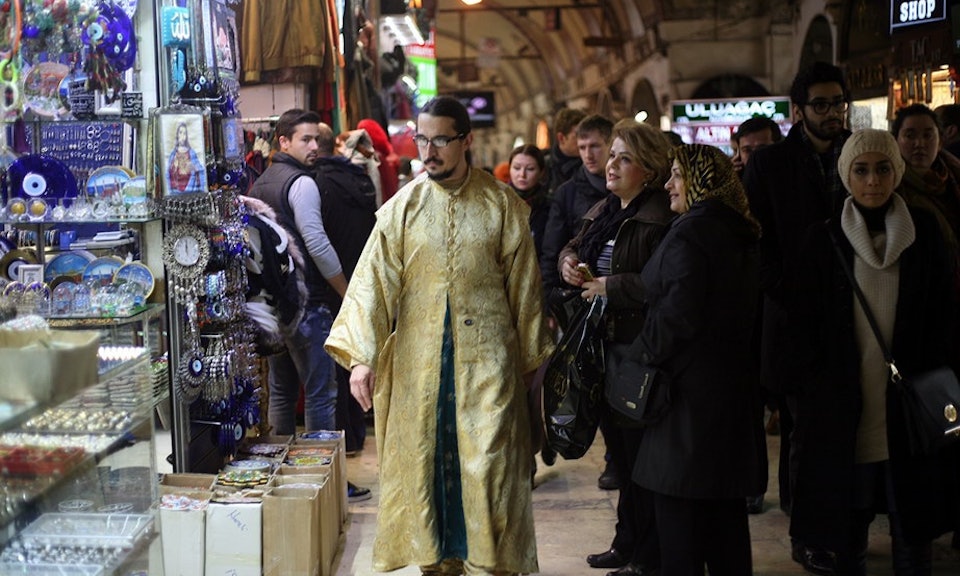Artist Profile
Serhat Tanyolaçar
Turkey
Status: In exile
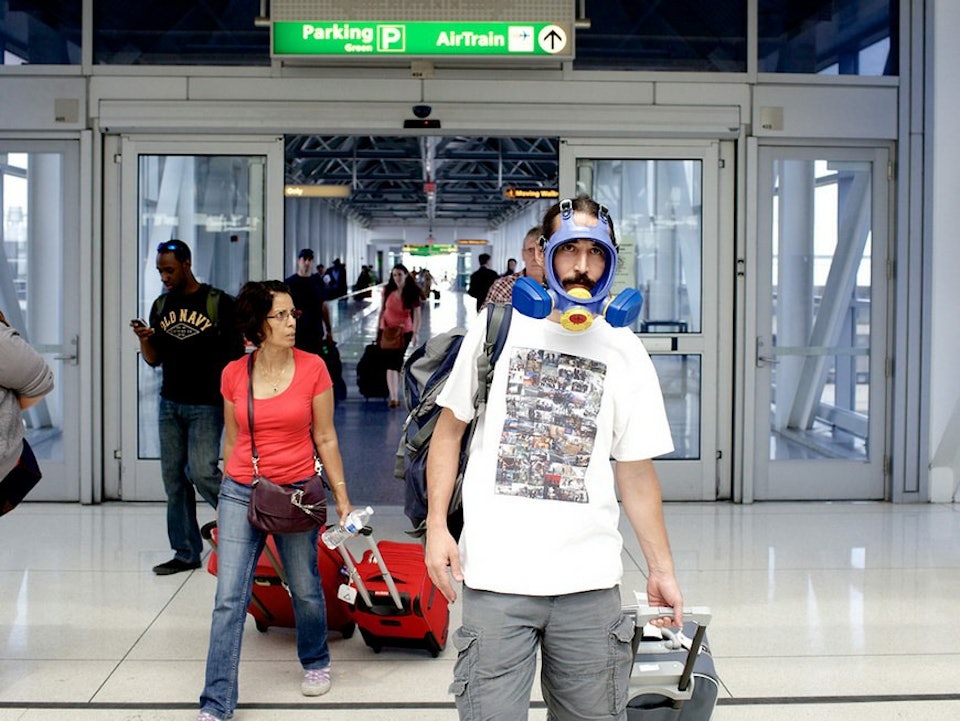
Serhat Tanyolaçar is a political artist, new-media printmaker, and autism advocate originally from Ankara, Turkey. During his 21-year career, Tanyolaçar has pushed boundaries through transformative approaches to art and innovative techniques in printmaking. His innovative and provocative artwork reflects his experiences of living in a country plagued by decades of political strife and violence. Using satire, humor, irony, and poetic absurdity as a critique of socio-political paradigms, he aims to raise awareness about political, social, disability and environmental issues, and more importantly, trigger positive changes around the world. As attacks on free expression and artists, like the persecution of journalist-artist Zehra Dogan and two documentary filmmakers of Bakur (North) continue, Tanyolaçar prioritizes the defense of human rights and freedom of expression in his work as both an artist and advocate. Most recently, Tanyolaçar was subject to censorship by the Polk State College’s Art Department,where he is a part-time faculty members Tanyolaçar was invited to submit his work in an open faculty art show. PEN America issued a statement of support for Tanyolaçar and his piece "Death of Innocence."
Among the many themes Tanyolaçar’s oeuvre’s explores, the most important is transformation. As an innovative multimedia artist with an acute political consciousness, Tanyolaçar uses his art as the symbol of dialogue and change itself. As he breaks down barriers with absurd and satirical narratives, he allows his art to transcend traditional mediums to emphasize the value of exchange and transformation. Many times, the costumes that Tanyolaçar creates for his public performances become recycled into another show to be reinvented as an artifact or documentation of its previous life. Depending on Tanyolaçar’s vision, it may live another life as a sculpture, become integrated into an installation or a new performance piece. For instance, the two costumes that he wore in “Mutual Dialogue”, a public performance in New York City in 2011, were turned into a sculpture for “Kiss” at the City University of New York Exhibition on 2011. Building on themes of dichotomy and relational aesthetics, Tanyolaçar demonstrates his belief that the past can relate or inform a society’s contemporary issues.
Although Tanyolaçar is an expert in all traditional print media, he continues to experiment with new forms of art to spark dialogues. Notably, he is one of the pioneers of laser-engraving printmaking, which was developed since 2012. The labor process is intensive: it starts with a digitally-manipulated image on a computer that becomes embossed on a traditionally-printed relief print on heavy-weight paper to achieve a multi-dimensional, almost sculptural effect. Tanyolaçar’s “Sername” print series is the first major work that applies this new printmaking technique. Created in 2015, “Sername” contains 20 pages of reconstructed and heavily-manipulated Ottoman miniature prints. The series criticizes popular culture, the Western conception of the Orient, the corruption and absurdity in politics, and social norms such as ambiguous morality. Tanyolaçar uses his own image in the laser-engraved prints as a “hero character” running against the Turkish state, religion, and culture to denounce the ongoing civil-rights violations in Turkey.
Despite living a self-imposed exile in Tampa, Florida since 2002, Tanyolaçar has remained committed to raising awareness about the constant threat surrounding artists and intellectuals in Turkey. In February-March 2015, Tanyolaçar enacted at public performance in metropolitan areas of Turkey called “Farewell (Elveda)” as a political statement and a poetic farewell to his home country. Wearing a traditional Ottoman-era kaftan and performing in front of Erdogan’s Presidential Palace in Ankara, Tanyolaçar criticized the Neo-Ottomanist foreign policy of the current Turkish government. On March 12th, he was forcefully stopped during the performance by special security forces, detained and questioned. Consequently, as of December 2015, Tanyolaçar cannot re-enter the country without running the risk of being imprisoned, unless he agrees to serve mandatory forced military service in the Turkish Armed Forces.
As a political artist, Tanyolaçar is no stranger to censorship, even in the United States. In January 2018, while working as an adjunct faculty member at Polk State College’s Art Department, Tanyolaçar was invited to submit his work in an open faculty art show. The piece he chose to exhibit, “Death of Innocence”, was a laser-engraved relief print that included depictions of figures like President Donald Trump and Vladimir Putin in sexually explicit contexts. Although no specific criteria for submissions was given, the college refused to display his artwork. University officials called the piece “too controversial” and when Tanyolaçar pushed for specifics, he was greeted with vague answers citing “too much” controversy. Ultimately refusing to be silenced, he boldly gave a lecture to the department’s head regarding political artwork. PEN America issued a statement of support for Tanyolaçar and his case.
For Tanyolaçar, censorship is an expected––if not essential––part of the artistic process. Rather than discourage him from continuing to create, it only invites him to engage further into the dialogue with his audience and direct the artistic vision for his next artwork. Through the use of poetic absurdity, satire, and humor––crucial strategies in Tanyolaçar’s work––the artist aims to break down the barriers that prevent people from engaging with each other and exchanging ideas. Believing that art can change society, or at least be part of social change, he urges today’s artist to recognize their social responsibility as cultural producers. He challenges artists to not produce physical pieces for the sake of creating artwork, but create art that responds to today’s circumstances and triggers positive change.
Nowadays, Tanyolaçar is working on a new series that features digital photo manipulation and laser engraver printmaking. In a bold, visual political statement, Tanyolaçar depicts himself and prolific intellectuals and journalists who were murdered and hanged by the Turkish Deep State and the junta regime from the 1970s to 2010s. With himself as an “artist as the oppositional figure”, Tanyolaçar also features Aziz Nesin, Deniz Gezmiş, Çetin Emeç, Uğur Mumcu, Bahriye Üçok, Hrant Dink, Ali İsmail Korkmaz, who was recently killed during the Gezi Park protests in 2013, and Gollum from The Lord of The Rings.
The depiction of Gollum is Tanyolaçar's critique of the persecution and sentencing of a Turkish artist who had portrayed President Erdogan as the fictional creature. Rifat Çetin, the artist behind the controversial piece, was sentenced to a year in prison and suspended for five years.
Tanyolaçar plans to finalize the unnamed series in the latter half of May 2018, ahead of the Presidential Elections in Turkey of June 2018.

By Clarisse Taboy, May 2018. Clarisse graduated from Sarah Lawrence College with a concentration in French Language and Literature. She hopes to use her passion for literature, art, and helping others to advocate for human rights and freedom of expression.


